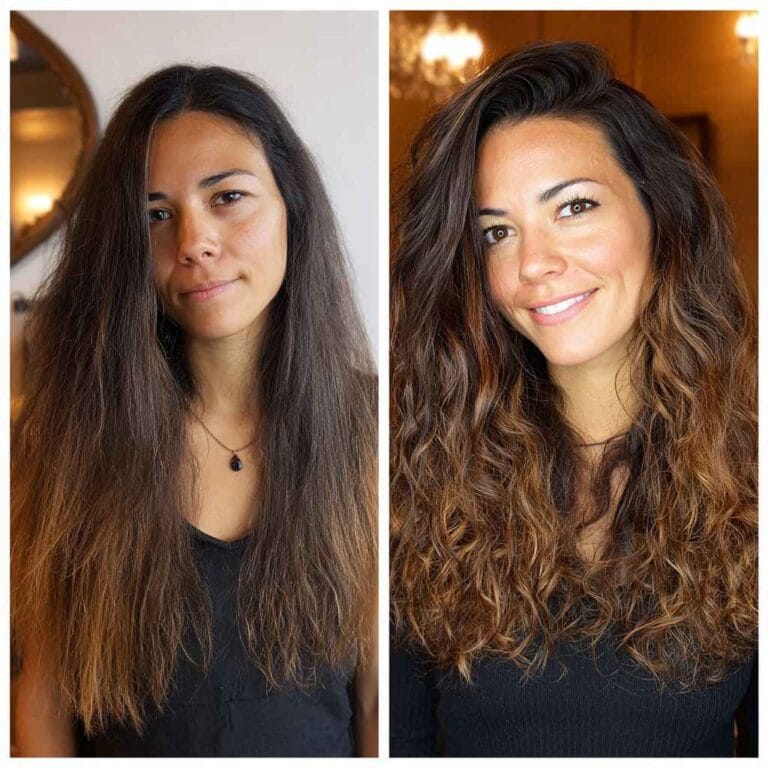Why does heat styling cause hair breakage? It’s a common question for anyone who loves sleek straight hair, bouncy curls, or blow-dried styles. Heat styling tools temporarily reshape your hair by breaking hydrogen bonds in the strands, but excessive heat or improper use can weaken the protective cuticle and inner protein structure. Over time, this leads to dryness, split ends, and brittle hair that snaps easily. Understanding how heat affects your hair and learning safe styling practices can help you enjoy beautiful styles without sacrificing hair health.
How Heat Affects Your Hair Structure
Heat styling tools break the natural hydrogen bonds in your hair to change its shape. When the temperature is too high, it damages the cuticle — the hair’s protective outer layer — causing moisture loss and weakening the inner protein (keratin) structure. Over time, this leads to dryness, dullness, and breakage.

Disclosing Affiliate Link
The Role of Moisture and Protein in Hair Strength
Healthy hair depends on a balance between moisture and protein.
Moisture keeps hair soft, flexible, and less prone to breakage.
Protein (mainly keratin) provides structure and strength, helping hair resist damage.
When heat styling removes too much moisture or breaks down protein bonds, hair becomes dry, weak, and brittle. Maintaining this balance with hydrating masks and protein-rich treatments is key to keeping hair strong and resilient.
Safe Temperature Ranges for Different Hair Types
Different hair types have varying tolerance to heat, so it’s important to adjust styling tools accordingly. Fine or damaged hair is very delicate and should be styled at lower temperatures, typically 250–300°F (120–150°C), to prevent breakage. Normal hair can usually handle moderate heat around 300–350°F (150–175°C), while thick or coarse hair may require higher temperatures of 350–400°F (175–200°C) to achieve the desired style. Regardless of hair type, it’s best to start with the lowest effective temperature and always use a heat protectant, which forms a barrier to reduce moisture loss and protect the hair’s protein structure from damage.
Common Signs of Heat-Damaged Hair
Heat-damaged hair shows visible and tactile signs that indicate your strands are stressed. Common symptoms include dryness and dullness, as heat strips away natural oils that keep hair shiny and hydrated. You may notice split ends and breakage, where strands snap easily, especially after brushing or styling. Hair may also feel rough, brittle, or straw-like, and lose its natural elasticity, making it less flexible and more prone to tangling. Recognizing these signs early allows you to adjust your styling habits and introduce protective treatments to prevent further damage.
Protective Treatments and Preventive Tips
Protecting your hair from heat damage starts with creating a barrier between your strands and high temperatures. Heat protectant sprays, serums, or creams coat the hair, reducing moisture loss and preventing protein breakdown. Regular deep conditioning treatments help restore hydration and strengthen the hair shaft, while protein masks rebuild damaged keratin and improve elasticity.
Healthy Styling Habits for Long-Term Hair Care
Maintaining healthy hair while using heat styling tools requires consistent, mindful habits. Start by limiting the frequency of heat styling and always preparing hair with a heat protectant. Use the lowest effective temperature for your hair type, and avoid repeatedly passing tools over the same section. Incorporate gentle brushing and detangling techniques to prevent breakage, and give your hair regular breaks from heat to recover.
Additionally, nourishing shampoos, conditioners, and occasional deep-conditioning treatments keep hair hydrated and strong. Over time, these habits help prevent damage, preserve hair elasticity, and maintain shine and resilience for long-term hair health.
